
Soft Baroque's fountain workshop at Domaine de Boisbuchet. Photo by Samael Covarrubais. Courtesy of Domaine de Boisbuchet / Soft Baroque.
Reporting from Soft Baroque’s recent fountaneering workshop in the South of France
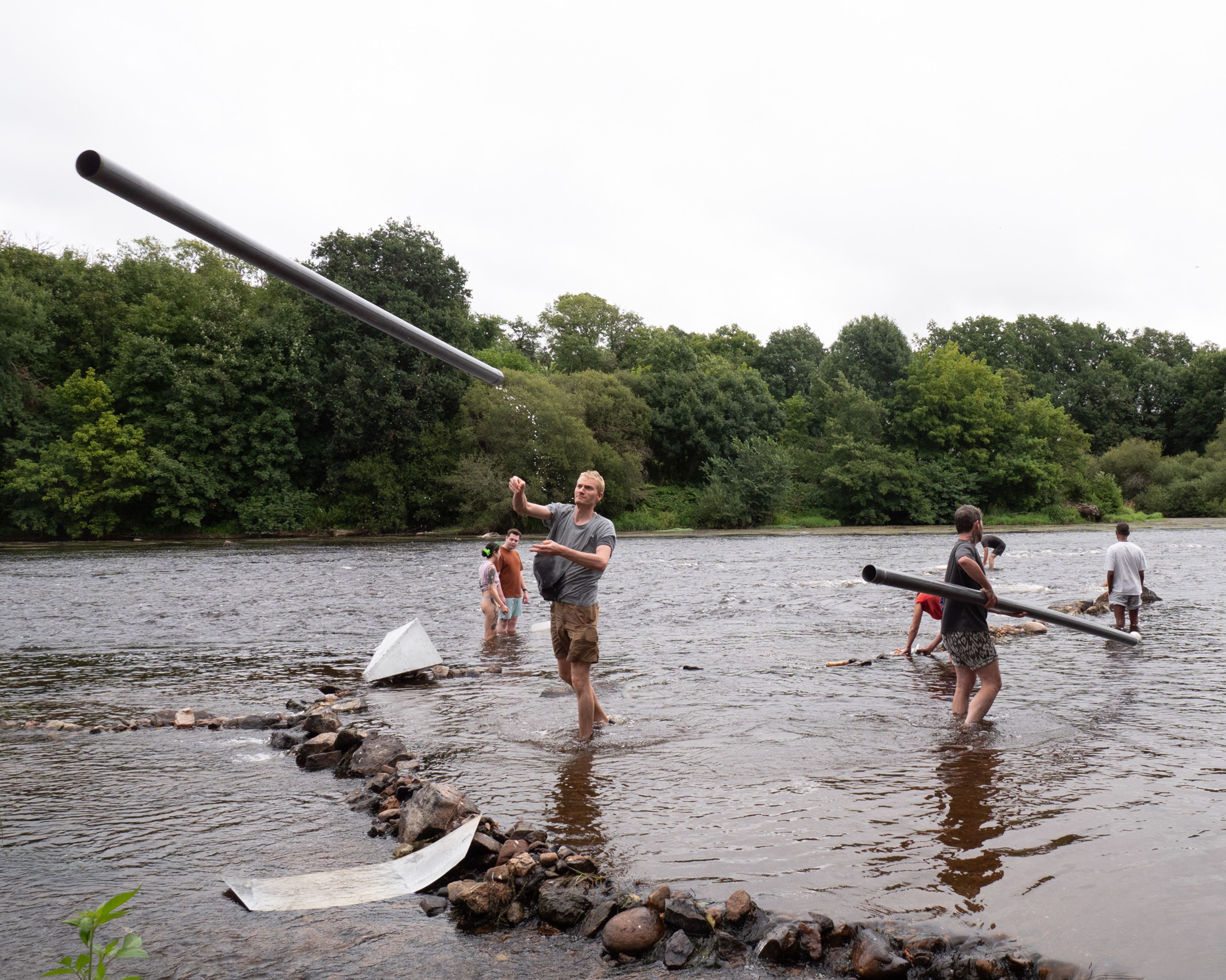
Soft Baroque's fountain workshop at Domaine de Boisbuchet. Photo by Bensu Karamustafa. Courtesy of Domaine de Boisbuchet / Soft Baroque.
Domaine de Boisbuchet, the international research center for design and architecture in southwest France, sits at the end of a long, winding country lane. To get there, you pass a sign directing you towards “Trauma,” a riverside hamlet, and cross the swift Vienne river before you see the pointed cone tops of a château poking through the trees. For one week in late July, design studio Soft Baroque soaked the research center in water, as the object makers turned temporary fountaineer. Blurring the boundaries between “acceptable furniture typologies and conceptual representative objects,” art and design practice, Soft Baroque creates work with conflicting functions and imagery. Industrial plastic laminate Shaker chairs, dancing furniture, pieces inspired by MS Paint brush tools, in wet look marble, and soft metal, balance beauty and consumer logic, concept and form.
Established in 1986 by curator and collector Alexander von Vegesack, Boisbuchet sits on 150 hectares of protected land, its château the cherry on top of a vast architectural park developed over the last 35 years through workshops and restoration projects. A Poet’s Datcha by Alexander Brodsky sits among the trees, matching the incline of their trunks; Shigeru Ban’s Paper Pavilion, a mix of wood connections and tubes made of recycled paper, faces the edible garden; a series of bamboo houses, pavilions and domes by Markus Heinsdorff, Simón Vélez, and Jörg Schlaich are dotted across the grounds; and a Japanese Guesthouse, built in 1863 in West Japan and reassembled at Boisbuchet in the early 2000s, fronts the entrance to the forest.

Soft Baroque's fountain workshop at Domaine de Boisbuchet. Photo by Samael Covarrubais. Courtesy of Domaine de Boisbuchet / Soft Baroque.

Soft Baroque's fountain workshop at Domaine de Boisbuchet. Photo by Samael Covarrubias. Courtesy of Domaine de Boisbuchet / Soft Baroque.
There are eighteen (and counting) architectural interventions, distinct spaces tied together through a common thread of their connection to their environment; a quality the campus shares with the Vitra Design Museum, where von Vegesack was a founding director. At Boisbuchet, architecture and design is put directly in dialogue with nature, and this is further foregrounded in their annual workshop program.
This year, the workshop’s theme is: “Repair, Recharge, Reset.” Groups of students and designers signed up to build an Arab pigeon tower — adobe communication towers, where magneto-recepting pigeons exchanged messages between cities, countries and continents — with urbanists Ahmed and Rashid bin Shabib, learned about fermentation in a multidisciplinary lab with food designer Johnny Drain, and picked up basket-weaving techniques with designer Bertjan Pot.
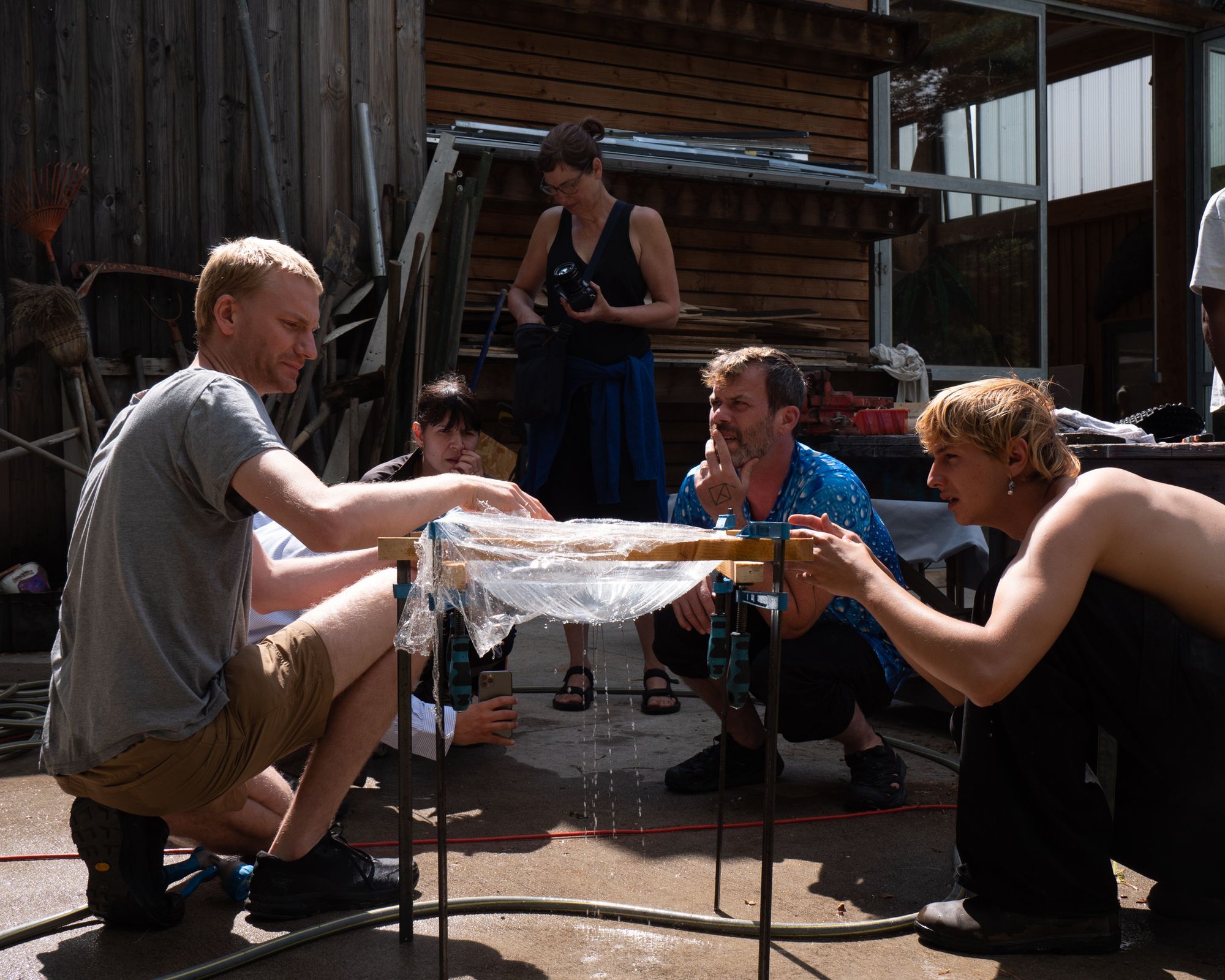
Soft Baroque's fountain workshop at Domaine de Boisbuchet. Photo by Bensu Karamustafa. Courtesy of Domaine de Boisbuchet / Soft Baroque.
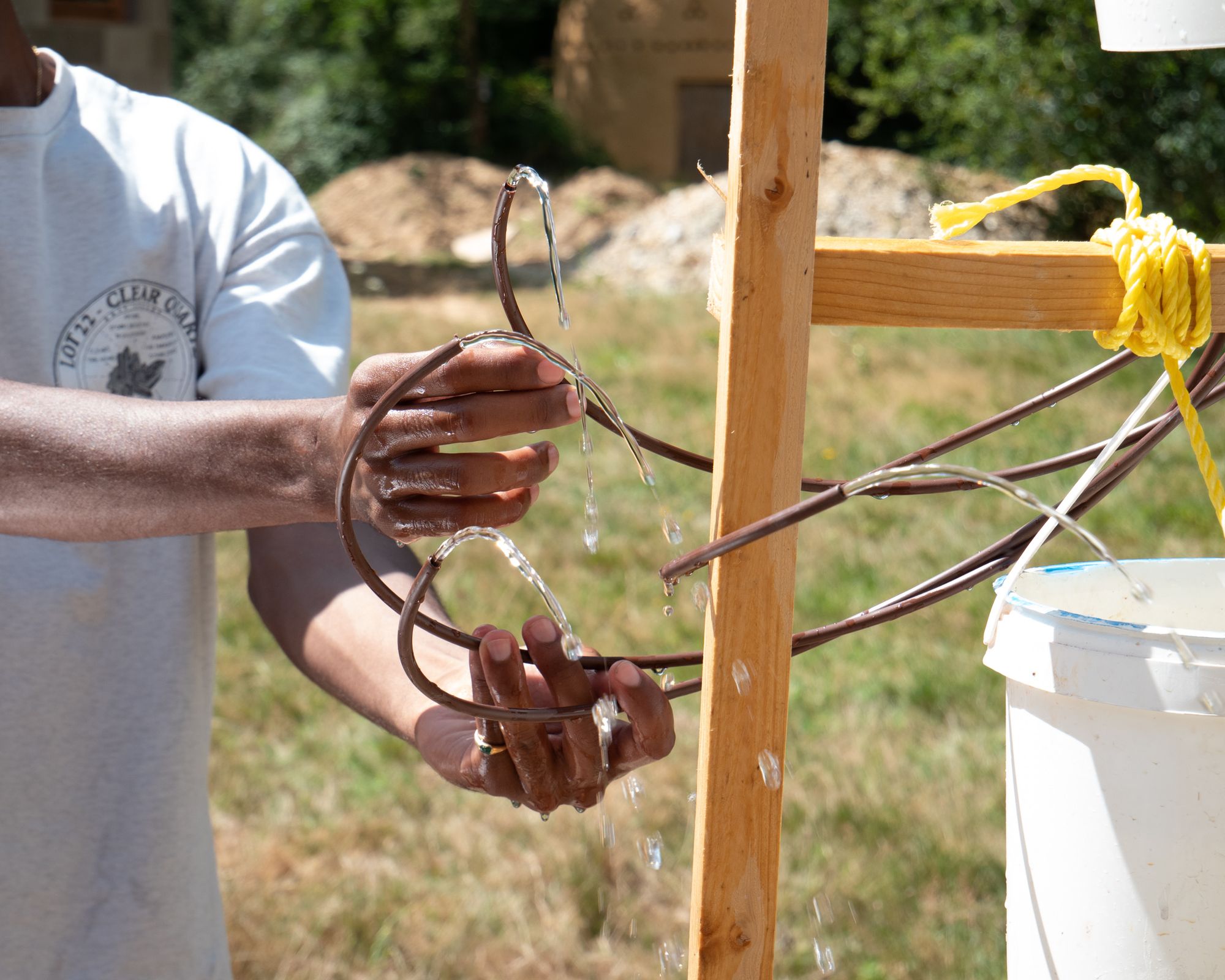
Soft Baroque's fountain workshop at Domaine de Boisbuchet. Photo by Bensu Karamustafa. Courtesy of Domaine de Boisbuchet / Soft Baroque.
Soft Baroque’s workshop, “Live Streams,” took water as its starting point. Through a series of experiments with materials, found objects, hydraulic pumps and gravity play, the design studio tested how we could evolve the fountain as a design object, summed up by the central question: “What is the destiny of objects that are superfluous to basic needs, but bring pleasure and relaxation?” They previously designed a personal waterfall cap, which channels water over the bill of the hat; a conceptual fountain — Modernism’s Sprung a Leak — that repurposes Marcel Breuer’s tubular steel chairs as a series of curved metal spouts; a mirror that produces a scented mist; and a concept for a portable waterfall fountain, which has a flexible membrane that conforms to undulating surfaces. In the brief for the workshop, Soft Baroque introduced laminar streams, hydroelectric turbines, water eruptions at NASA, soap in hot tubs, frozen fountains and fire fountains. “Should a fountain only be heard and never seen, a carrier for cultural symbolism and meaning, a diagram for digital, societal and commercial systems, or a more utilitarian object?,” they asked. “Don’t be afraid to make something simple, funny, grotesque or beautiful.”
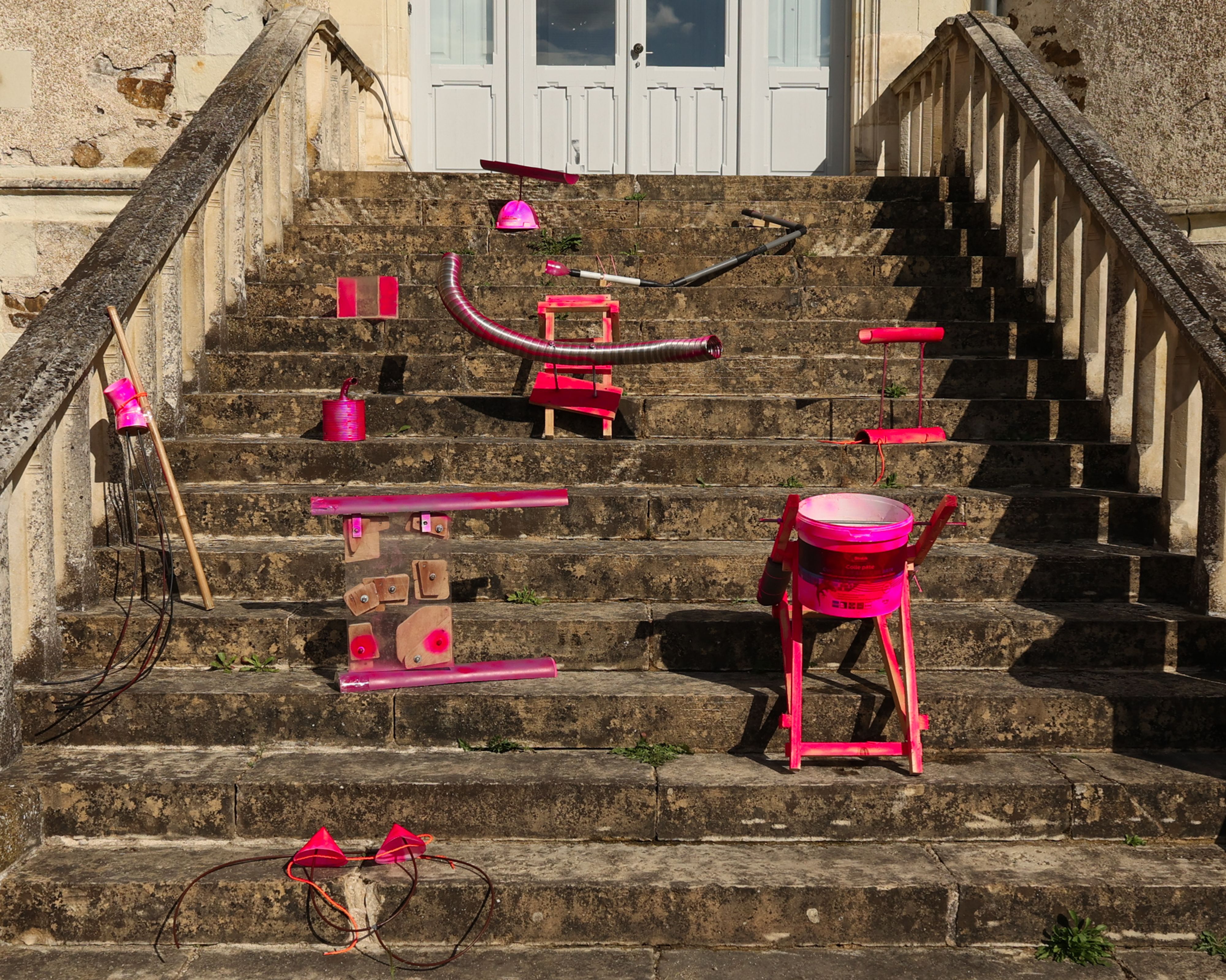
Soft Baroque's fountain workshop at Domaine de Boisbuchet. Photo by Samael Covarrubias. Courtesy of Domaine de Boisbuchet / Soft Baroque.
In Ancient Rome, fountains were the primary source of freshwater in the city, channeled via aqueducts. Mimicking the nature of a spring, they formed the center of social, thirst-quenching (and hygienic) life. During the Renaissance, the Popes rediscovered these hydraulic innovations and commissioned Baroque sculptors to embellish the fountains of Rome, who animated the figures in stone with “the liquid glue of life.” Louis XIV raised the stakes of Baroque fountains even further by adding music and fireworks. He commissioned “Les Grandes Eaux Musicales” for the Château de Versailles, shooting water into the air through complex gravity play; fountaineers would signal each other with whistles, turning fountains on and off as the Sun King paraded through the gardens, demonstrating his power over nature. From here, the dramatic potential of fountains grew while their practical function dwindled. This trend crescoendoed at the Fountains of the Bellagio, in Las Vegas, where water jiggles, sprays, collapses and jets into the air to the tune of “Time to Say Goodbye” and “My Heart Will Go On.”
In thinking about ways to evolve the fountain, the workshop involved discussing and testing the potential of an anti-fountain and making something from slight interventions in the landscape, or from drips rather than jets of water. Working with, or against, the current of the Vienne river, workshop participants tested ideas in the water, tried out clay fountains that eroded and slipped away, and stopped the flow of the water — creating a spectacle from stillness. They made foil, plastic and cotton sweat, produced cascading fountains from chain reactions between buckets, bamboo and bowls, and tested the potential of fountaineering with the natural energy of the river or the high drama of an amphibious pump.
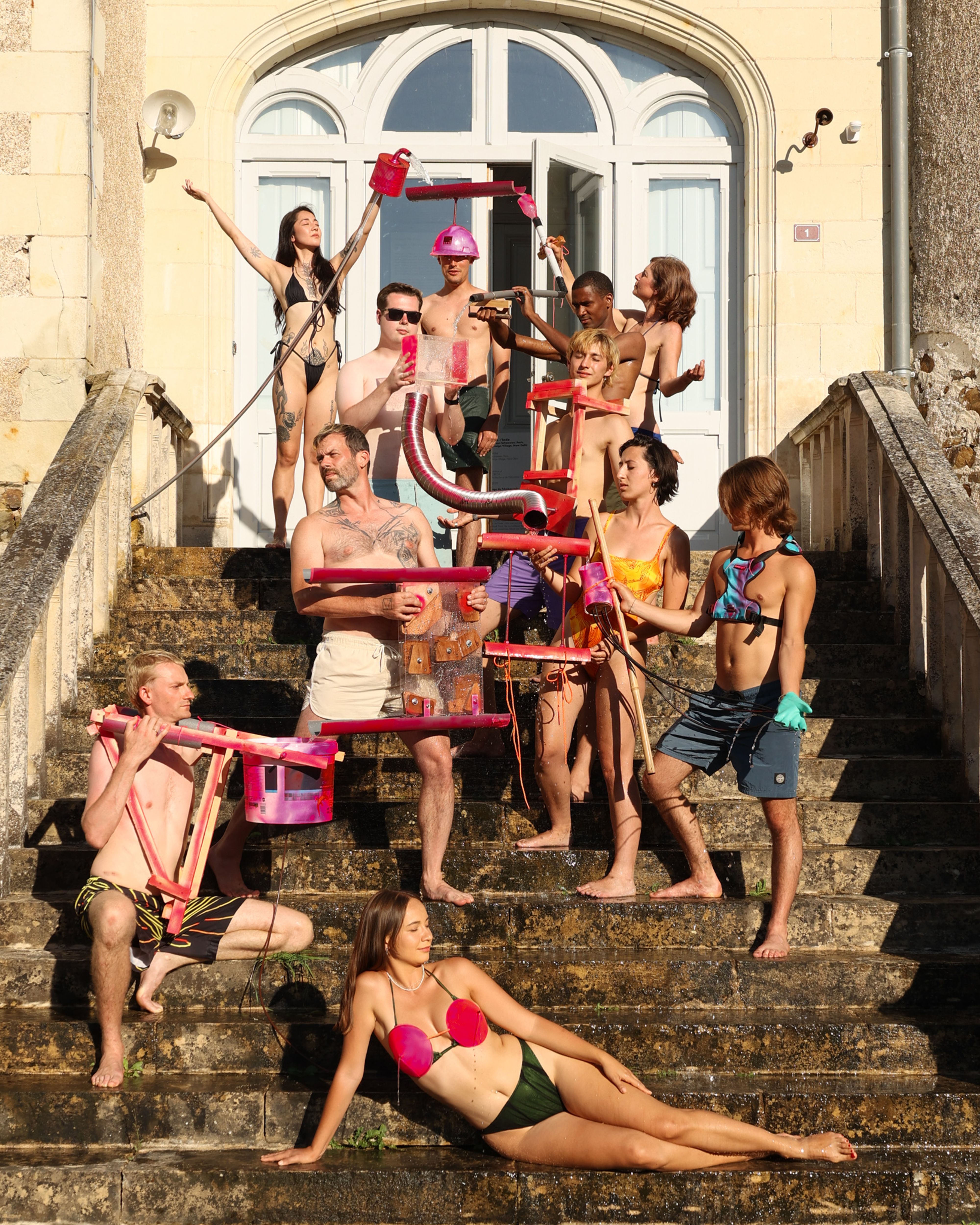
Soft Baroque's fountain workshop at Domaine de Boisbuchet. Photo by Samael Covarrubias. Courtesy of Domaine de Boisbuchet / Soft Baroque.
Against the Mainstream, two fountains by workshop participants Inés Pey and Simone Szymanski, take a playful approach to opposing both the nature of the river’s current and the tradition of the fountain itself — the fountain becomes an obstacle within the current. The first fountain, a translucent green plastic sheet, makes use of the direction of the river, manipulating it by blocking the current and sending water through perfectly-cut circular holes— a cascading waterfall in miniature. The second fountain, a grey monolith that looks like it’s sprung a leak, sends water up into the air via an amphibious pump, opposing the direction of the river just for a moment, before it falls and is swept up by the current — “A kind of metaphor of human work”, says Pey and Szymanski. For Sweat, workshop participants Rika Hermle, Alexandre Joncas, Will Napier and Anton Ripon played with the potential of making plastic perspire. They stretched it over wood, puncturing small holes that allowed a pool of water to slowly drip through, rolling across the underside of the plastic anti-fountain before dropping to the ground. The final object hung from the ceiling of Boisbuchet’s mill like a chandelier, spotlit to make use of the drama of light as it passes through water.
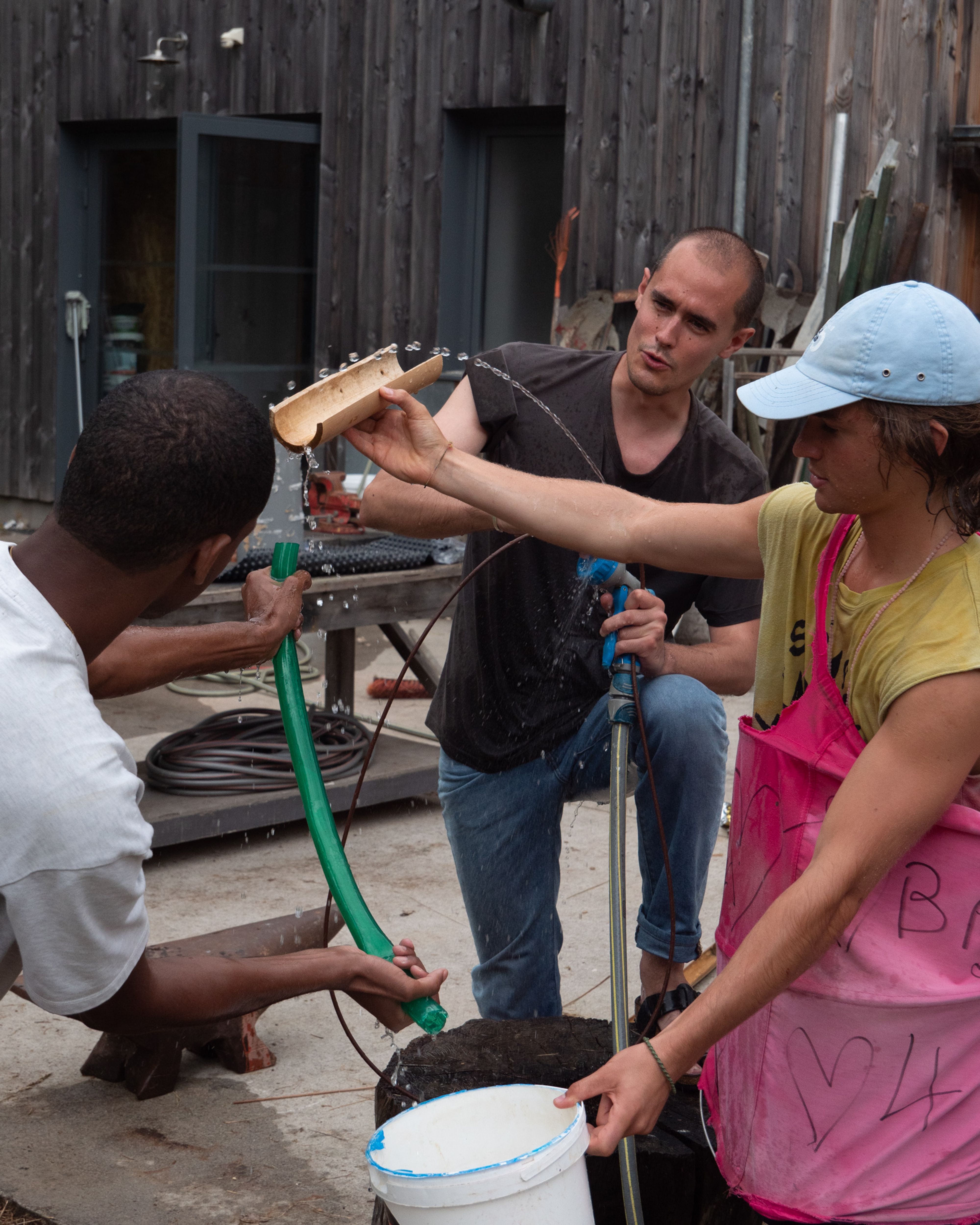
Soft Baroque's fountain workshop at Domaine de Boisbuchet. Photo by Bensu Karamustafa. Courtesy of Domaine de Boisbuchet / Soft Baroque.
The Founchain, an ‘accidental Baroque’ human fountain by workshop participants Bensu Karamustafa, Luigi Pensa, Martin Sigler and Gabriel Vuillemin made use of materials found in the workshop to compose a chain reaction fountain on the steps of the château. They adapted bamboo, construction gear, plastic buckets, rubber gloves, harnesses, pipes, plastic sheets, wood, and an aluminum pipe into objects that could channel liquids; cascading down to the grand finale of water spouting from a fluoro pink cone bra (part Madonna on the Blond Ambition tour, part Villa d’Este) — to the tune of Rossini’s “Il barbiere di Siviglia (the barber of Seville), Act 1: Cavatina: Largo al factotum della citta,” otherwise known as “Figaro.” There is a long tradition of fountains fronting châteaux, grand villas and casinos, thought to symbolize power and bring luck. As the workshop participants took their positions on the stairs, water flew out from the hose attached to a tin can with a spout welded to its base, and tumbled through the formation. Each person took on the posture of a Baroque statue, frozen among the ‘tricksy’ water.